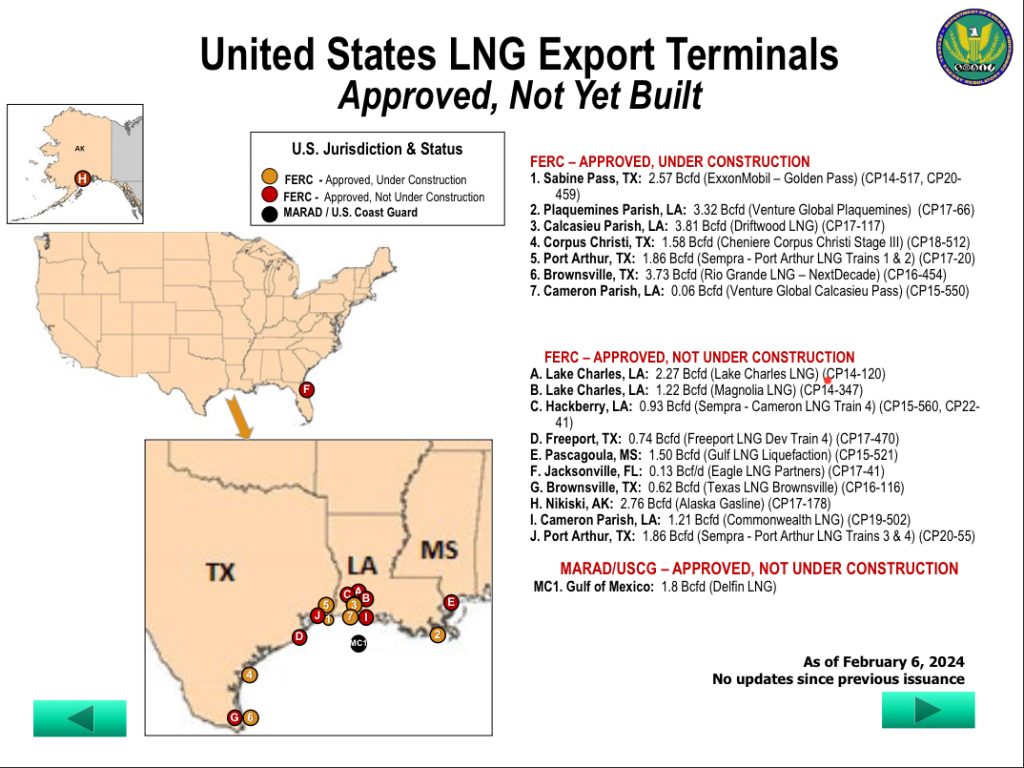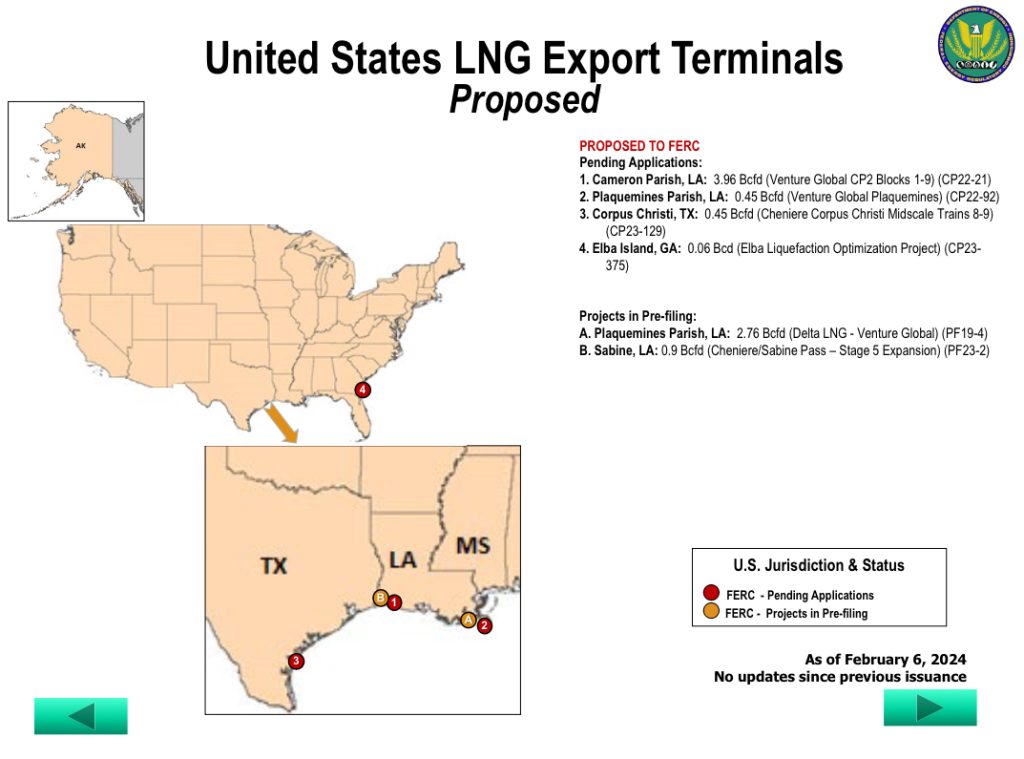We won a battle, but the climate war is far from over. Anyone living near the four proposed LNG export terminals and the two that are in pre-filing got a reprieve when the Biden Administration announced a pause on LNG permitting. Those people have every reason to celebrate. Assessing the known impacts to health, the climate and consumers will, hopefully, make a big difference going forward.
It’s a no-brainer that we shouldn’t add any more methane or carbon dioxide to our atmosphere. But I think we need some perspective when we think about how much difference this pause will make to what’s happening now.
According to FERC: “There are more than 170 LNG facilities operating in the U.S. performing a variety of services. FERC’s Existing, Approved not Yet Built, and Proposed LNG Export Terminal maps only show the export Terminals.
The Existing map shows that there are eight terminals currently in operation. The are not affected by the pause.

On the Approved, Not Yet Built map, there are seven terminals that are approved and under construction and another eleven that are approved but not yet under construction for a total of 18 additional LNG export terminals and 26 overall. These are not affected by the pause.

The four terminals that are pending application and two in pre-filing are the only ones affected by this pause. These six proposed and not yet permitted are the only LNG terminals affected by the pause.

There will be zero improvement to our climate from this pause. In fact, the current acceleration of climate change will only get worse because drilling will keep expanding to supply the eight existing terminals and the18 already permitted terminals. Climate change will get worse. Health impacts will get worse. The water will rise and people and animals will drown.
Oil and gas is always several steps ahead of us. They saw the opposition to LNG export terminals and found another way.
Methane is being transported across the Texas border to Mexico through the already operating Roadrunner and TransPecos pipelines. Currently under construction is a four-foot diameter Saguaro Connector Pipeline and that’s another nearly 7 bcfd of methane. The methane from the Saguaro is slated for export from a Mexican LNG export terminal, Saguaro Energia LNG export facility.
I was there on the frontline in the very beginning of the fracking boom. I moved to Wise County, Texas where George Mitchell married the two technologies hydraulic fracturing and horizontal drilling to produce oil and gas from the Barnett Shale. I spent my first night on my 42-acre Wise County farm on June 19, 1996, and Mitchell drilled the first producing shale well in 1997 on the border of Wise and Denton Counties. I’ve watched this unfold from the very beginning.

As fracking expanded, people contacted me and we collected data that became the first case studies of health and water impacts from the fracking boom. Residents in the Barnett Shale are still suffering from health impacts. Total Energies is drilling next to preschools in Arlington, Texas while building an LNG export terminal near Brownsville.
Every bit of this starts with a hole in the ground. Each of those holes is where the methane and volatile organic compounds starts escaping. At each of those holes there are front line communities of children, mothers, fathers, grandparents and sisters and brothers who are suffering impacts.They are not helped by Biden’s pause on LNG permits.
Biden’s LNG pause is undoubtedly a good development. This was only possible because of the fierce pressure of the US climate movement–especially the leadership from the Gulf. For that we should celebrate. We should, however, be clear-eyed about our analysis of the situation: the fight is far from over. A full victory would entail Biden declaring a climate emergency (he has powers that could bypass Congress); the rejection and decommission of all LNG terminals along the Gulf; a slowing and eventual ceasing of drilling at the oilfields; and a robust federal jobs program to transition oil and gas workers into the green economy.